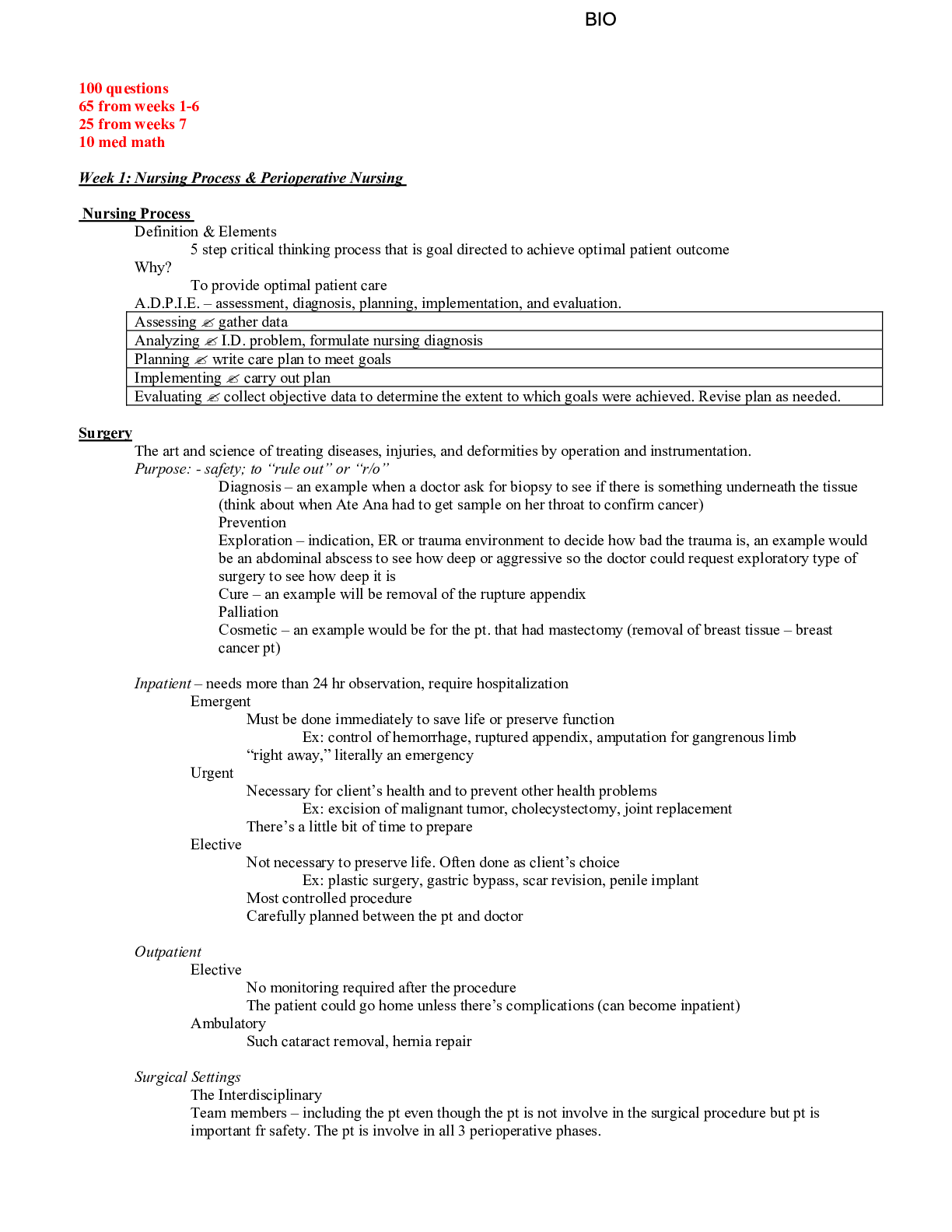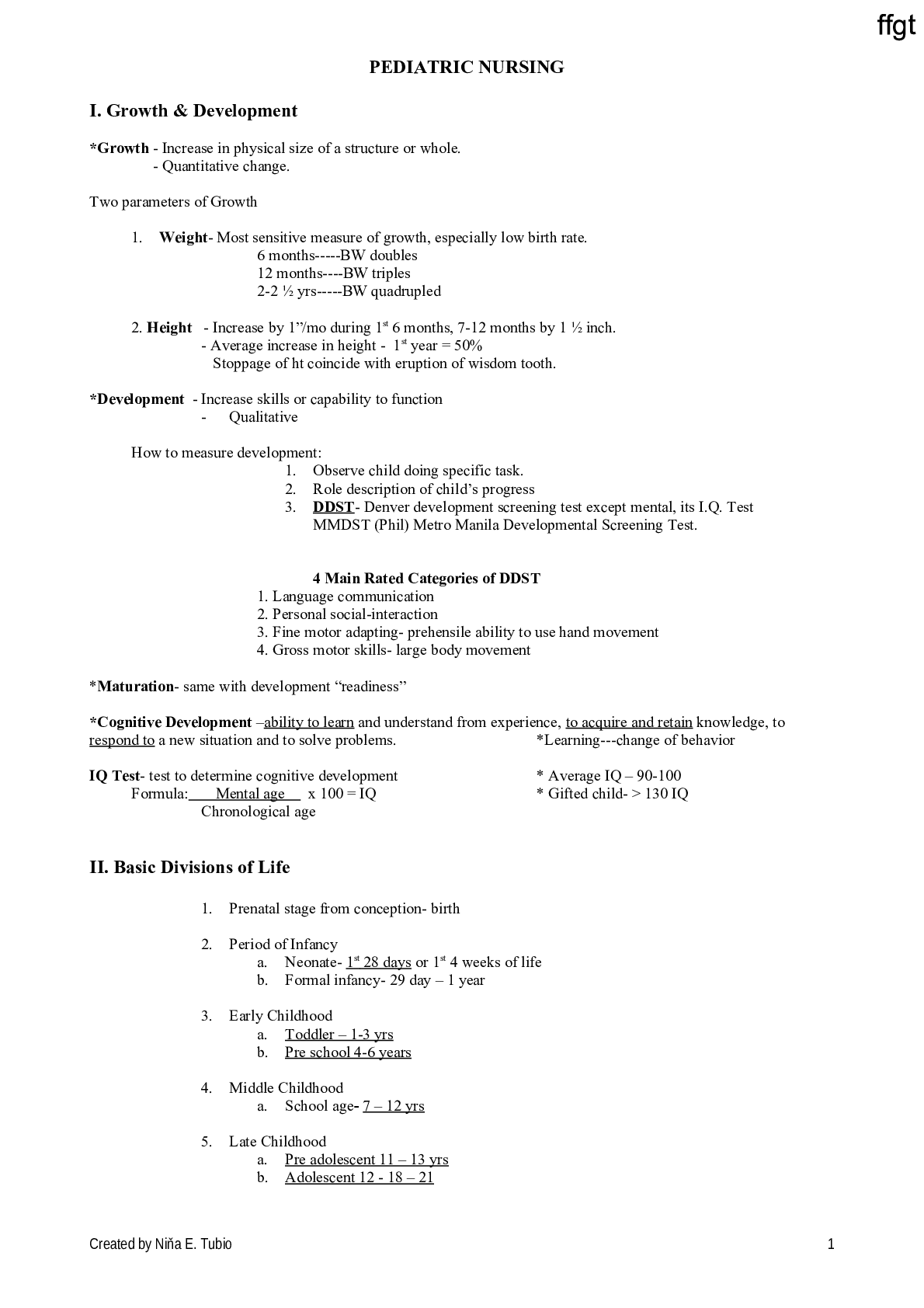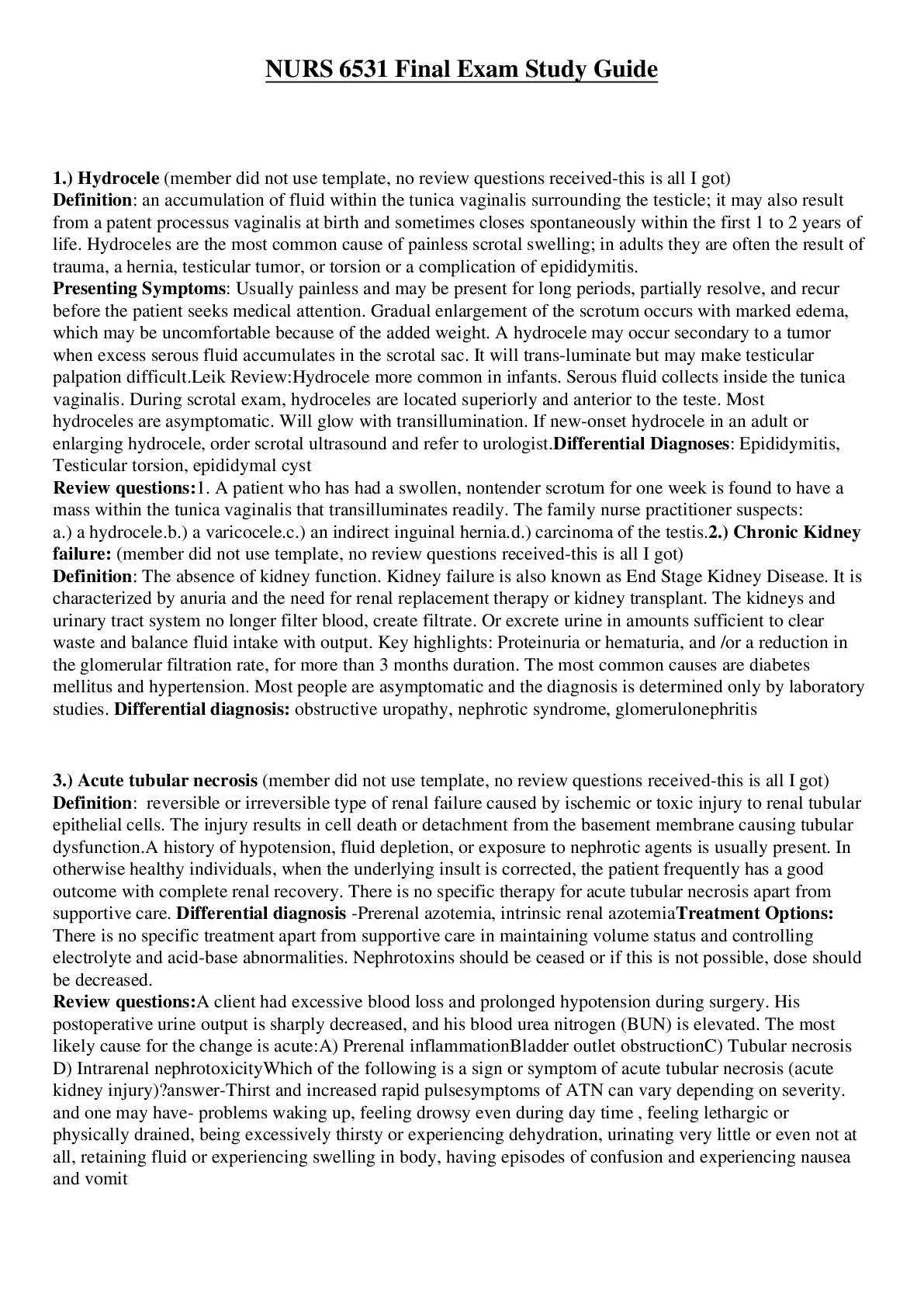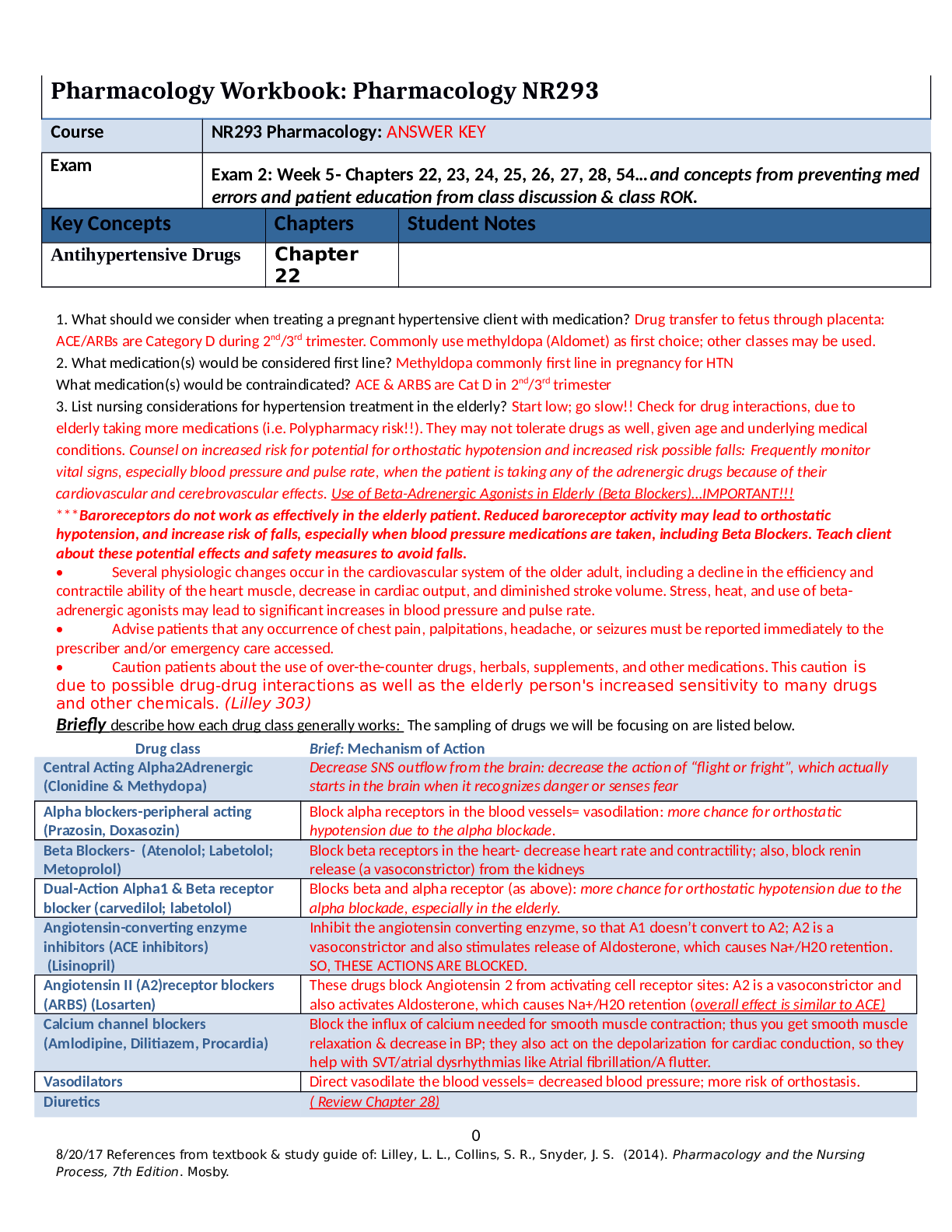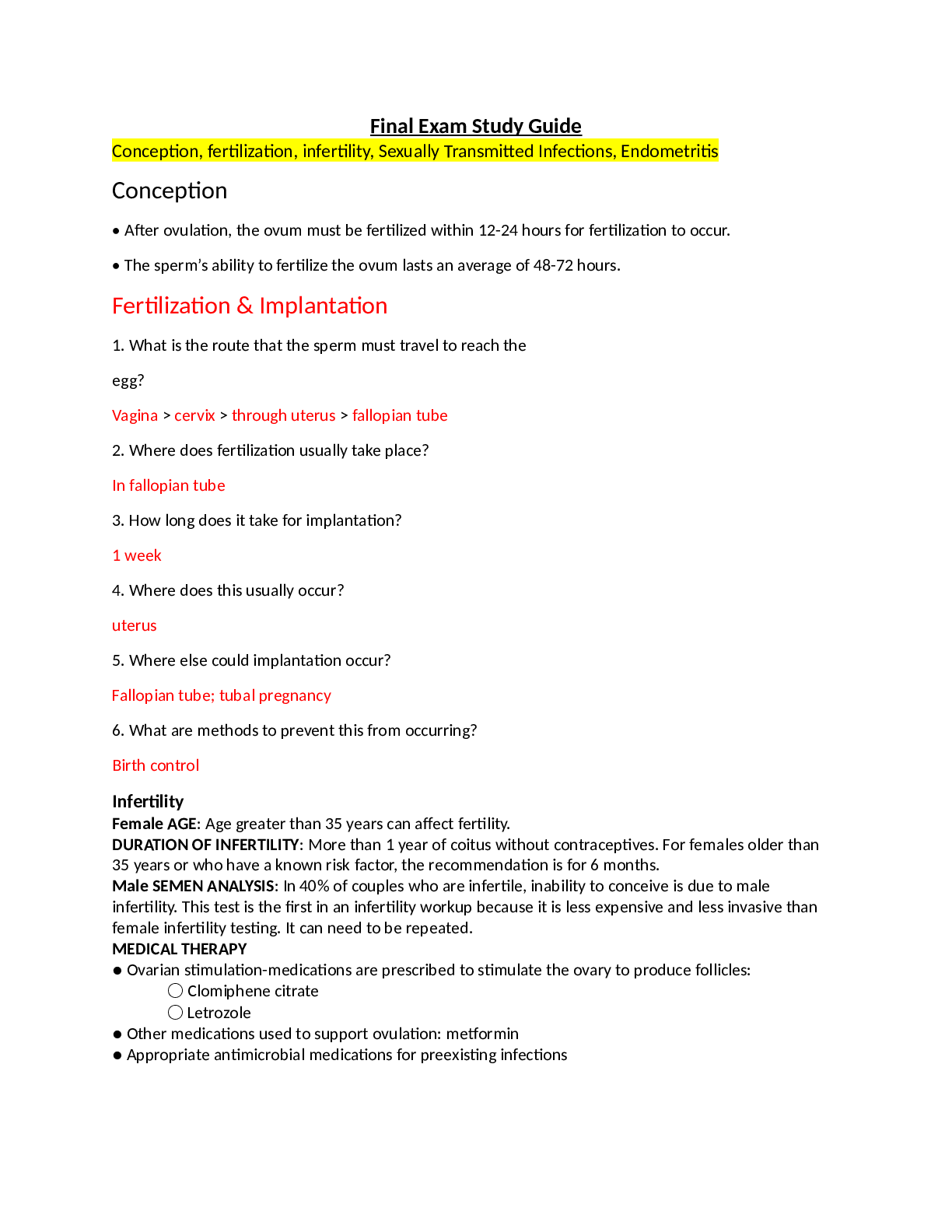Health Care > STUDY GUIDE > MSN 610 Course Syllabus 4-1 (All)
MSN 610 Course Syllabus 4-1
Document Content and Description Below
Student Learning Outcomes: Upon completion of this course the student will be able to: 1) Demonstrate a complete physical assessment using a virtual patient 2) Develop differential diagnosis as it ... applies to pathophysiological processes and assessment 3 ) Document a complete history and physical of a patient in designated specialty areas 4) Utilize appropriate health screening measures and anticipatory guidance for clients across the life span 5) Describe the techniques of and rationale for commonly used laboratory, radiological and other diagnostic studies 6) Interpret subjective and objective data to formulate a diagnostic conclusion Required Course Materials Rhoads, J. and Peterson, S.W., 2018. Advanced Health Assessment and Diagnostic Reasoning. 3rdEdition. Jones & Bartlett. ISBN 9781284105377 Stern, S., Cifu, A., Altkorn, D.(2015). Symptom to Diagnosis: An Evidence-Based Guide. 3rd Ed. McGraw-Hill Education. ISBN 978-0-07-180344-1 pg. 1 Fall 2018 XXX 999 I-Human Software purchased via PayPal on-line Medical Media Software purchased via PayPal on-line http://labtestonline.org (free reference for diagnostic labs associated with a condition/disease) Introduction to in vitro Diagnostic Testing https://dx.advamed.org/sites/dx.advamed.org/files/resource/advameddx-policy-primer-on-diagnostics-june- 2011.pdf (Links to an external site.) Required Equipment: Equipment needed for skills practice: (Improvising is NOT acceptable). You will use these pieces of equipment your entire careers. ALL EQUIPMENT IS REQUIRED FOR FINAL EXAM. *High Quality Stethoscope * otoscope/ophthalmoscope * Reflex Hammer * Tuning Fork * Tongue Blades * Cotton Swabs * Handheld Eye Chart Suggested Resources: Fishbach, F.& Fisbach, M.,(2018) Fishback’s Manual of Laboratory and Diagnostic Tests. Wolters Kluwer. ISBN: 9781496377128 Bickly, Lynn (2017). Bates Guide to Physical Examination & History Taking. 12 ed. Wolters Kluwer. ISBN: 9781469893419 Huether, S.E. & McCance, K.L. (2017). Understanding Pathophysiology. 6th ed. Elsevier Publisher Methods of Instruction: Teaching strategies will include, but not limited to, textbook readings, group discussion of case studies, review of various diagnostic tests needed to confirm a final diagnosis among a list of differential diagnoses, submission of history and physical findings utilizing virtual patients (via I-Human) and a video submission of a comprehensive history and physical on a live patient. Assessment skills should be practiced with consenting adolescents or adults, (13 years old and above) i.e. spouses, friends, relatives. All information/data obtained for this course should remain HIPPA compliant. Practice and Assignments SHOULD NOT be performed on actual patients within your job setting. Faculty reserves the right to make changes as necessary to this course syllabus. Students will be notified in writing of any changes in a timely fashion. It is the student’s responsibility to check the Course Announcements frequently. pg. 2 Fall 2018 XXX 999 Course Assignments: Students will be required to submit assignments by the due date and time stated. Assignments submitted late but within 24 hours of time due can receive up to half credit if the assignments meets the other criteria. ANY ASSIGNMENT SUBMITTED AFTER 24 HOURS OF TIME DUE WILL BE GIVEN A ZERO UNLESS THERE IS SUBSTANTIAL EVIDENCE OF AN EMERGENY CAUSING THE DELAY. Assignments will include: Quizzes: There will be 3 quizzes during the course every 2 weeks. These quizzes will evaluate the critical knowledge acquired within those modules. Each quizz will consist of 25 questions. Each answer is worth 1.0 points for a total of 25 points per test. (10% of your final grade). Case Discussions: The Discussion posts will constitute class participation. There will be 6 case discussions with one case study presented within each of the 6 modules. These discussions will focus on the synthesis of patient data and diagnostic reasoning. The cases will have specific questions that must be answered by every student with a least 1 other student reply/comment to be posted regarding that case. You must post your answers by Wednesday night at 11:59 pm and a reply post by Saturday night at 11:59 pm. You must cite your references in APA format for each entry. Each case discussion is worth up to 20 points. There will be 10 pts for the initial post and 10 pts for the reply post. The reply post MUST ADD TO THE INITIAL POST. (The case discussions will be 17% of your final grade.) Weekly Discussion Board Grading Criteria Discussion Board Grading Rubric Points 10 points 5.0 points 0 points Student Points Comments Quality Demonstrates thorough preparation, synthesis and informed opinion, addresses the topic thoroughly, comments/asks questions that contribute to group learning. Submits appropriate outside materials into the discussion. 2 References Required in APA format Demonstrates some preparedness and generally addresses topic; comments/asks questions; outside materials may lack appropriateness , Uses 1 Reference only Does not use APA format Demonstrates inadequate preparation, marginal or offtopic posts, lacks synthesis of information, minimal or no contribution to group learning. Rarely supports the efforts, ideas or work of others pg. 3 Fall 2018 XXX 999 Response of Submission 10.0 points 5.0 point 0 points -Student meets the deadlines for posting evidence- based responses outlined by course requirements -Always listens to and supports the work of others. 1 Reference required in APA format -Student posts responses within 24 hours of the due date/time -Usually listens to and supports the work of others but does not add new information to the post -No Reference presented -Student posts is past the 24 hours deadline -Does not respond to others. No references presented Students Total Grade I-Human Case Submissions: I -Human is a virtual software program that will allow you to practice your interviewing and physical assessment skills as you obtain a focused or comprehensive history and physical findings on a virtual patient. Each of the I-Human cases will require a History, Physical Exam, Differential and Definitive diagnoses that you must establish. The H & P MUST be written up in the EMR found within IHuman. The program is in a learning platform so that you will be able to check your progress, identify the correct answers, learn why other answers are incorrect, and document your H & P in an electronic record format. You must register for this software program. The registration link will be announced before your first assignment is due. [Show More]
Last updated: 2 years ago
Preview 1 out of 21 pages
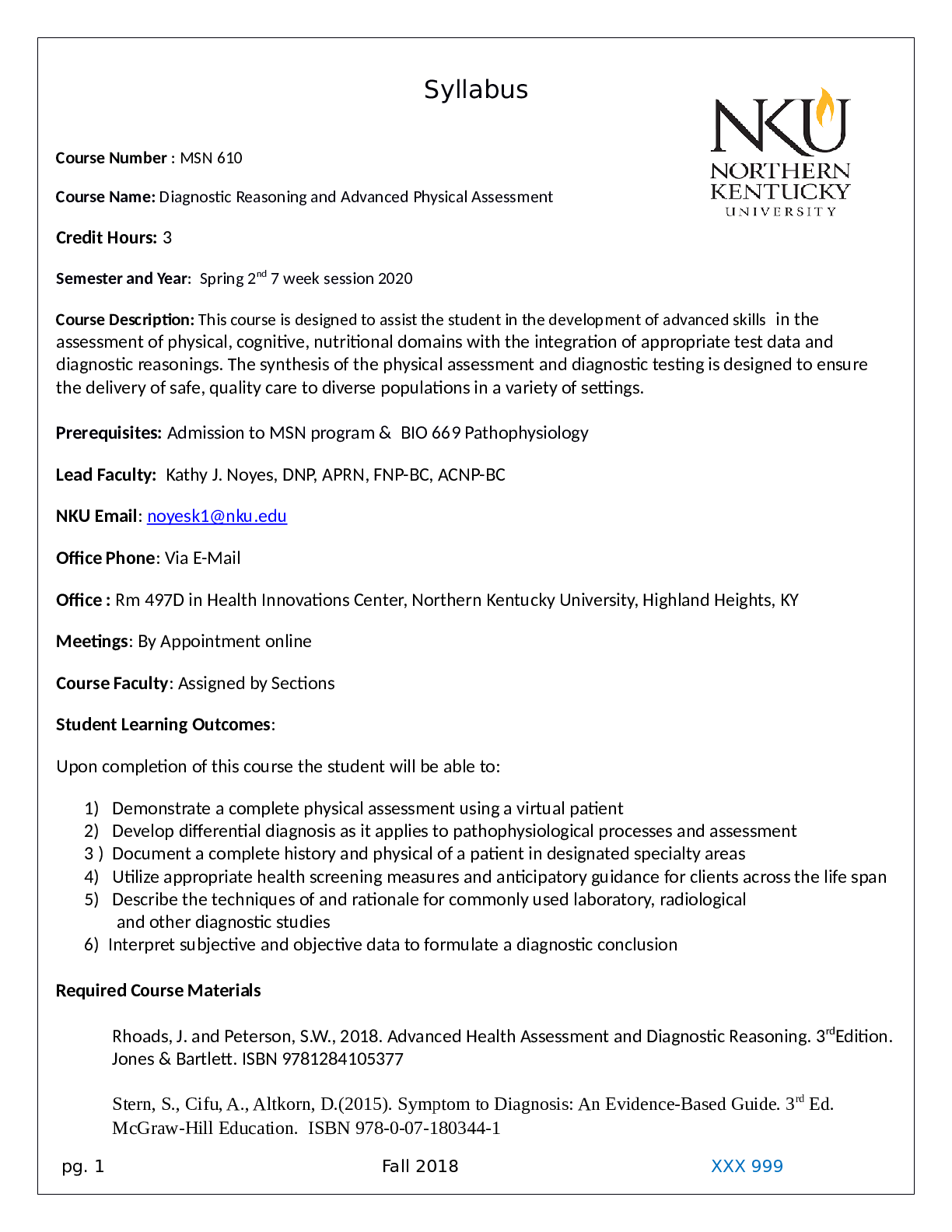
Buy this document to get the full access instantly
Instant Download Access after purchase
Buy NowInstant download
We Accept:

Reviews( 0 )
$8.00
Can't find what you want? Try our AI powered Search
Document information
Connected school, study & course
About the document
Uploaded On
Oct 03, 2021
Number of pages
21
Written in
Additional information
This document has been written for:
Uploaded
Oct 03, 2021
Downloads
0
Views
124



